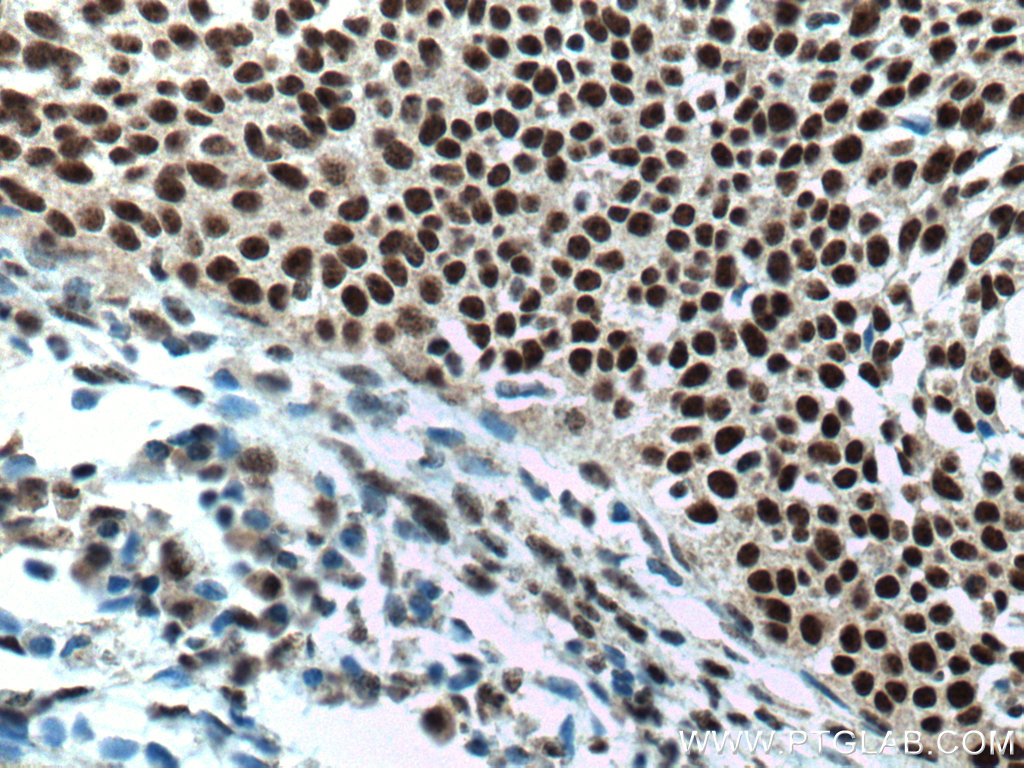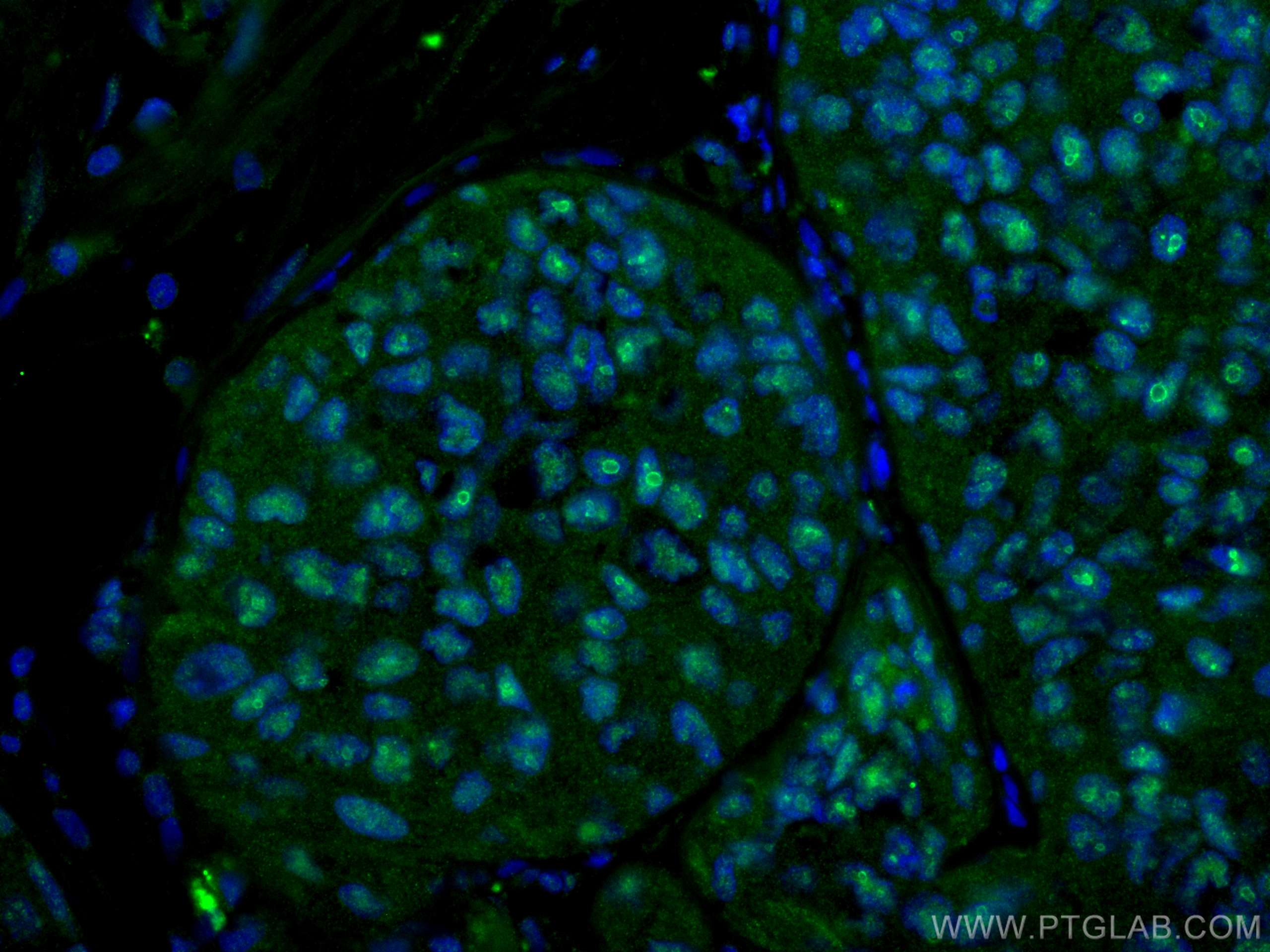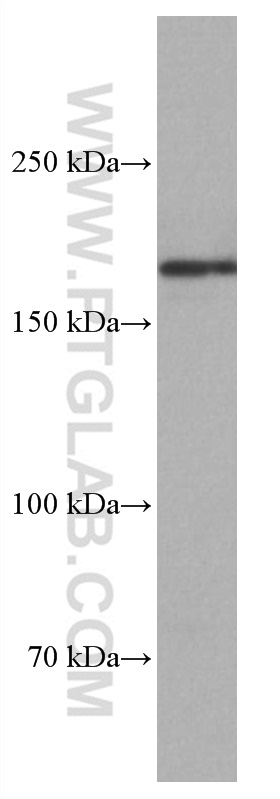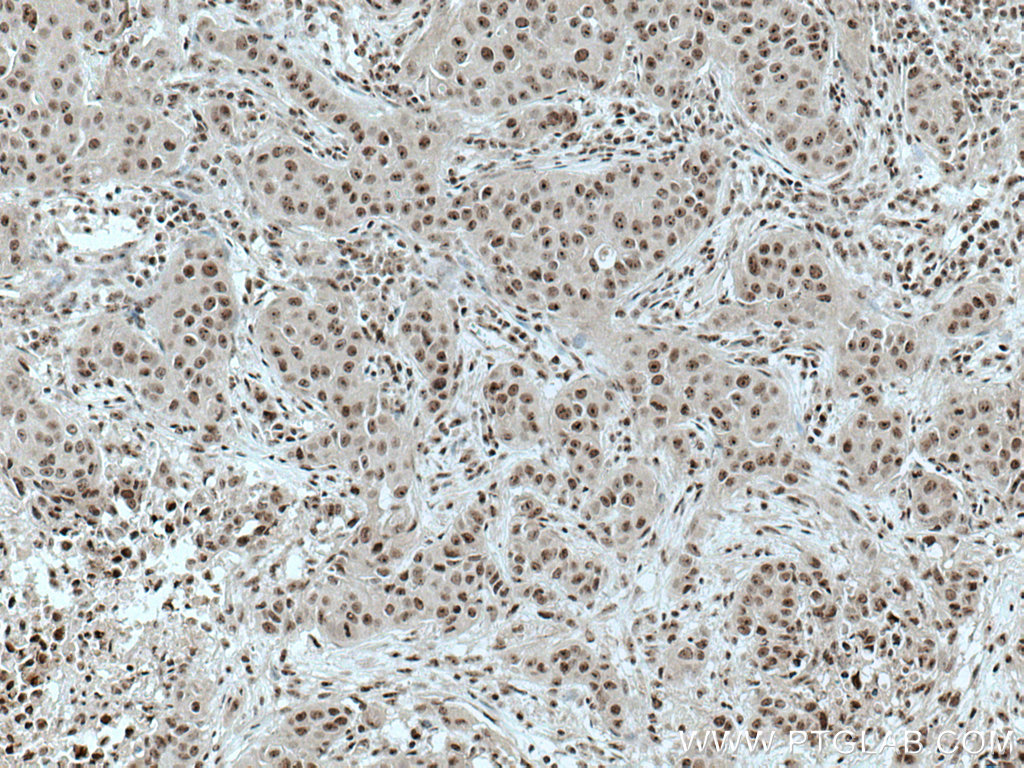验证数据展示
产品信息
67050-1-PBS targets PELP1 in WB, IHC, IF-P, IF-Fro, FC (Intra), Indirect ELISA applications and shows reactivity with human samples.
| 经测试应用 | WB, IHC, IF-P, IF-Fro, FC (Intra), Indirect ELISA Application Description |
| 经测试反应性 | human |
| 免疫原 | PELP1 fusion protein Ag25729 种属同源性预测 |
| 宿主/亚型 | Mouse / IgG2b |
| 抗体类别 | Monoclonal |
| 产品类型 | Antibody |
| 全称 | proline, glutamate and leucine rich protein 1 |
| 别名 | 1B11E4, HMX3, MNAR, Modulator of non-genomic activity of estrogen receptor, Proline-, glutamic acid- and leucine-rich protein 1 |
| 计算分子量 | 1130 aa, 120 kDa |
| 观测分子量 | 160 kDa |
| GenBank蛋白编号 | BC069058 |
| 基因名称 | PELP1 |
| Gene ID (NCBI) | 27043 |
| RRID | AB_2882363 |
| 偶联类型 | Unconjugated |
| 形式 | Liquid |
| 纯化方式 | Protein A purification |
| UNIPROT ID | Q8IZL8 |
| 储存缓冲液 | PBS only , pH 7.3 |
| 储存条件 | Store at -80°C. The product is shipped with ice packs. Upon receipt, store it immediately at -80°C |
背景介绍
PELP1 was first identified as a 160 kDa protein in a screen for Src homology 2 (SH2) domain-binding proteins. PELP1 is overexpressed in 60-80% of breast tumors and plays important roles in both ER genomic and non-genomic signaling. In vivo, PELP1 subcellular localization is primarily nuclear in normal breast tissue, but it is localized to the cytoplasm in about 40% of invasive breast tumors. In the nucleus, PELP1 interacts with a number of transcription factors. The proto-oncogenic functions of PELP1 involve different cellular processes including epigenetic modifications leading to ER transactivation and breast cancer progression. Furthermore, PELP1 activates kinase cascades in the cytoplasm such as MAPK activation via c-Src and PI3K signaling.










